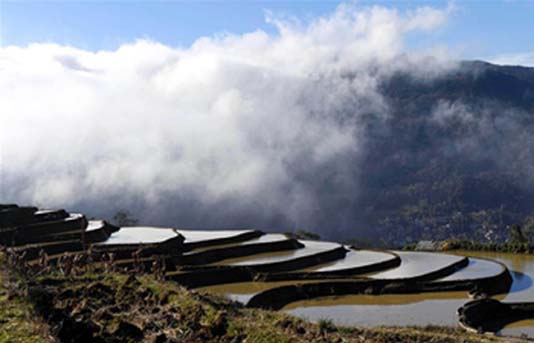CANBERRA, Dec 20, 2018 (BSS/Xinhua) – Australia is facing extreme heat,
rising oceans and declining rainfall as a result of global warming, a
landmark report has found.
The Commonwealth Scientific and Industrial Research Organization (CSIRO)
and Bureau of Meteorology (BOM) on Thursday published the biennial State of
the Climate report.
It found that Australia’s climate has warmed by over one degree Celsius
since 1910, as have sea surface temperatures in the oceans surrounding
Australia.
The amount of carbon dioxide in the atmosphere is up 46 percent from pre-
industrial levels to a level not seen for at least 800,000 years.
“In line with global trends, our data shows that Australia’s climate is
continuing to warm, with eight of the 10 warmest years on record occurring
since 2005,” Helen Cleugh, director of the CSIRO’s Climate Science Center,
wrote in the report.
“This warming is caused by increased greenhouse gases, such as carbon
dioxide, in the atmosphere.”
“Australia is already experiencing climate change now and there are impacts
being experienced or felt across many communities and across many sectors.”
Key findings of the report included that Australia’s bushfire seasons have
become longer and more severe, the number of extreme heat days is trending
upward and sea levels around Australia have risen 20 cm since records began.
The amount of annual rainfall in south-western Australia has declined 20
percent since 1970 and by 11 percent in the south-east between April and
October, leading to increased fire danger in the summer months.
“As the planet has warmed, we’ve pushed the cold fronts and cut off lows
that bring this rainfall to the southern parts of the continent, further
south,” said Karl Braganza, manager of climate monitoring at the BOM.
“In 17 of the past 20 years, April to October rainfall in southern
Australia has been below average.”
“Often the worst fire weather occurs when you’ve had long-term drought,
long-term above-average temperatures, maybe a short-term heatwave and then
the meteorology that’s consistent with severe fire weather and the ability
for fire to spread.”
“It’s those types of compound events that are going to be most challenging
going forward in terms of adapting to climate change in Australia.”
This marks the first time that the report has drawn attention to “compound
extreme events,” which refers to multiple variables coinciding together.
The report identified 2009’s Black Saturday fires, the worst bushfires in
Australian history, as an example of compound events because of strong wind
and dry thunderstorms that exacerbated conditions.
Cleugh warned that even if immediate action was taken, ocean acidification,
which had risen by 30 percent since the 1800s, and ocean temperatures would
continue to rise because of the CO2 already in the atmosphere.
“The temperature will increase and that will continue to contribute to the
increasing number of hot days, heat extremes, and fewer cold days,” she said.
“We expect tropical cyclones to decrease in number, but potentially
increase in intensity.”
“Extreme rainfall events are likely to become more intense.”
“The harsher fire weather, particularly in southern and eastern Australia,
will continue into the future and the trends in rainfall are likely to
continue.”



